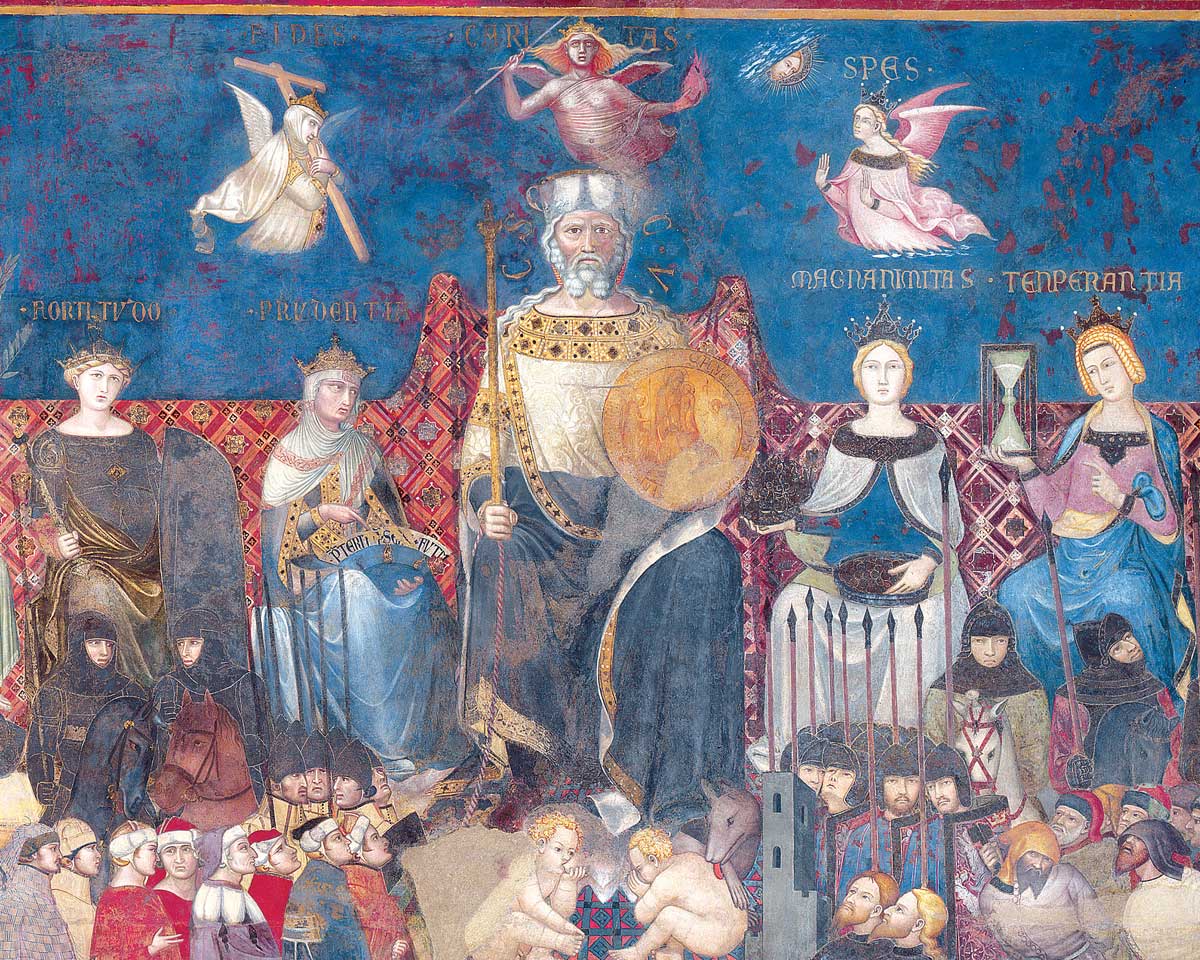Don’t Be Evil | History Today - 2 minutes read

The Palazzo Pubblico, which curves around Siena’s shell-like Piazza del Campo, was built at the end of the 13th century when the Tuscan city was a pioneer in the new industry of banking. It was a role it shared with its northern Italian neighbours and bitter rivals, such as Florence and Genoa, then among Europe’s most innovative technological hubs.
Within the Palazzo, on three walls of its Council Room, is a series of frescoes that have come to be known as the Allegory and Effects of Good and Bad Government, created in the late 1330s by Ambrogio Lorenzetti. They were commissioned by Siena’s ruling body, the Council of Nine, as a reminder and a warning, a counter to hubris and the nemesis that inevitably follows.
On one of the frescoes, devoted to responsible government, ‘holy virtue’ induces those gathered before him to create a ‘common good’. The fruits are apparent in another fresco, of the Peaceful City, where a polity thrives because its government is virtuous and wise.
Quite another world is depicted on the fresco where Tyrammides, the tyrant, gathers the enemies of public life, sinister figures who preside over a city where people lie prone on its streets as others fulfill base desires at the cost of the public good.
One can hardly fail, when looking at this fresco, to be reminded of daily scenes in modern San Francisco, a city shared between technology billionaires and armies of homeless drug addicts. The visible collapse of its social and material infrastructure has given rise to the term ‘high-tech feudalism’. Despite the $12 billion available to its City Hall, the beautifully appointed city on the bay, which until recently was among the most liveable urban environments on earth, appears to have lost its heart; its ludicrously wealthy technology companies prefer vacuous post-Christian sentiments such as ‘Don’t be evil’ to any civic minded compassion. A culture so fixated on the future is inclined, it appears, to neglect both its past and its present, the simple maintenance of its everyday life shattered by dreamers.